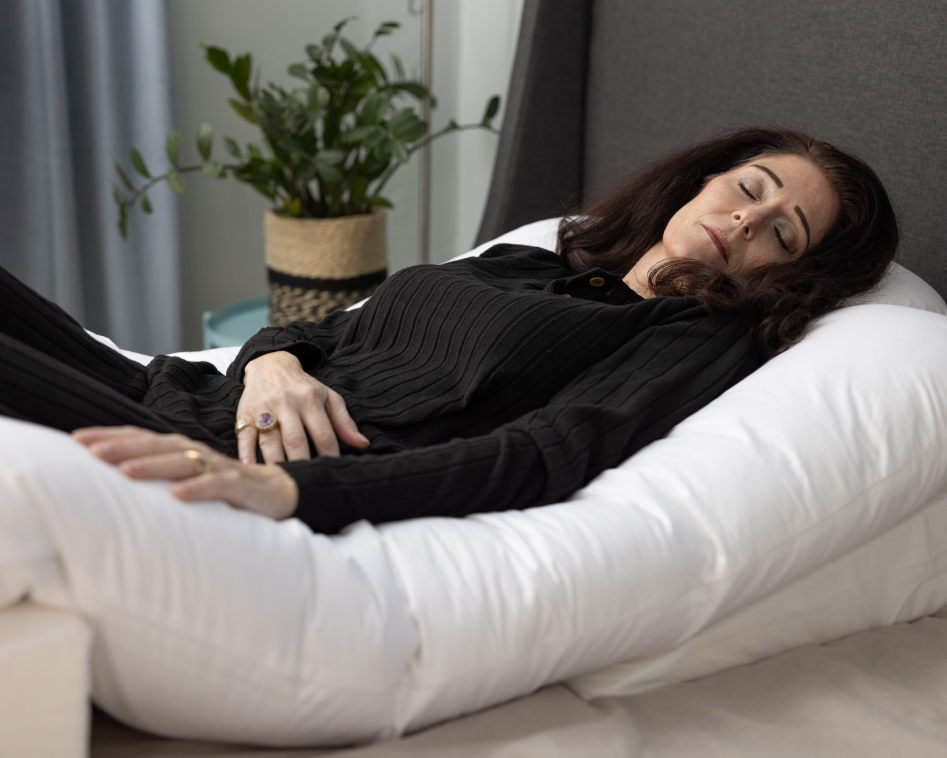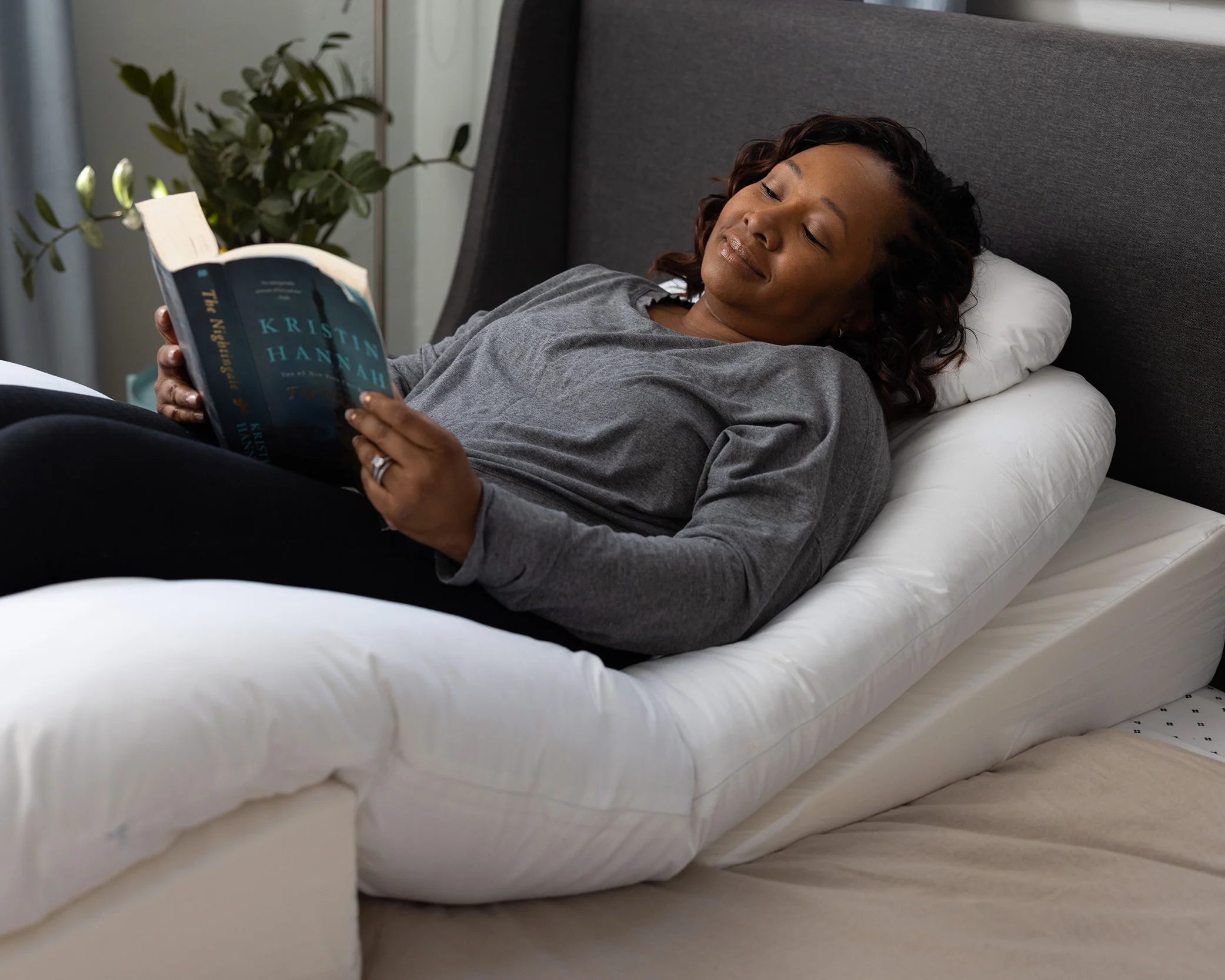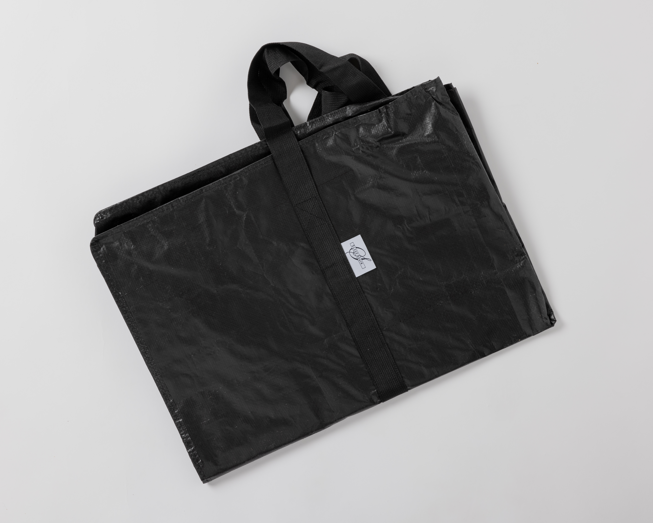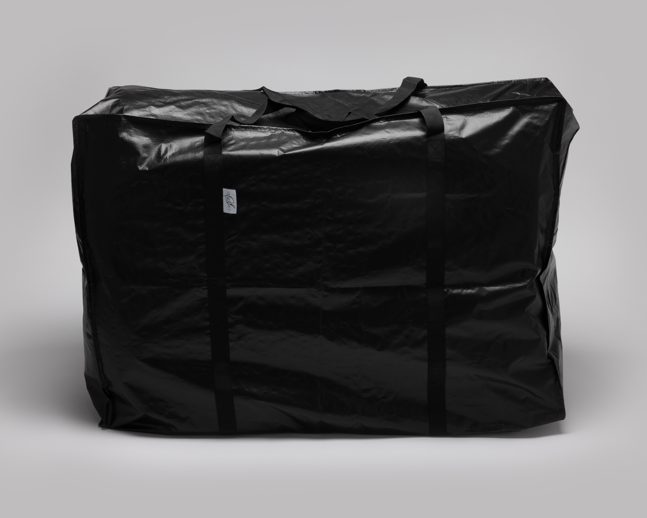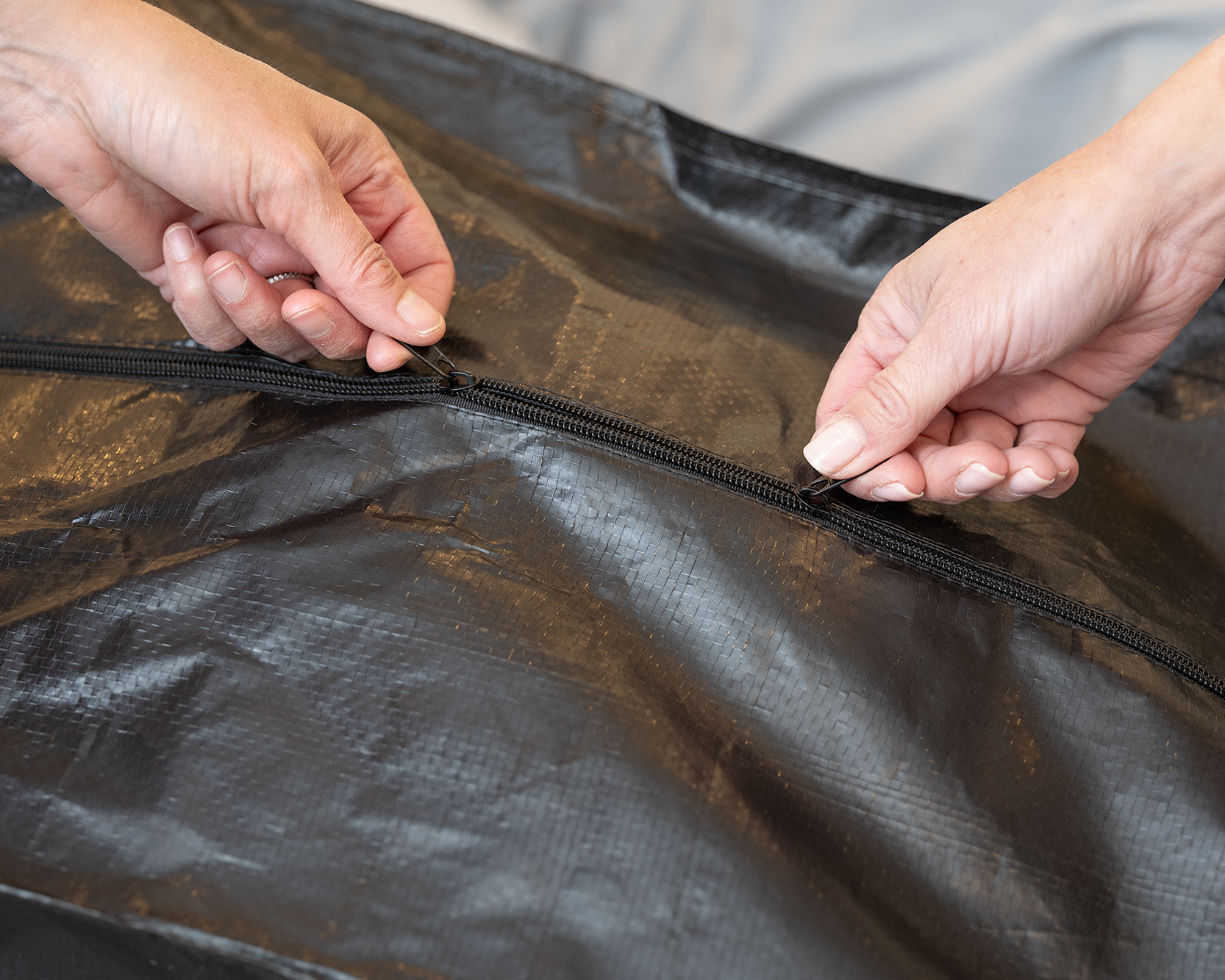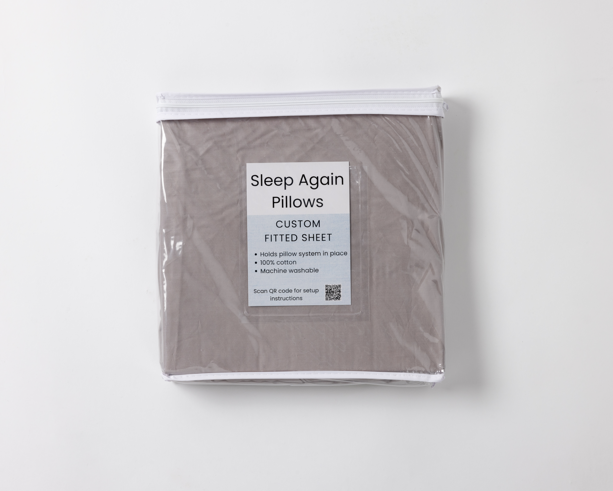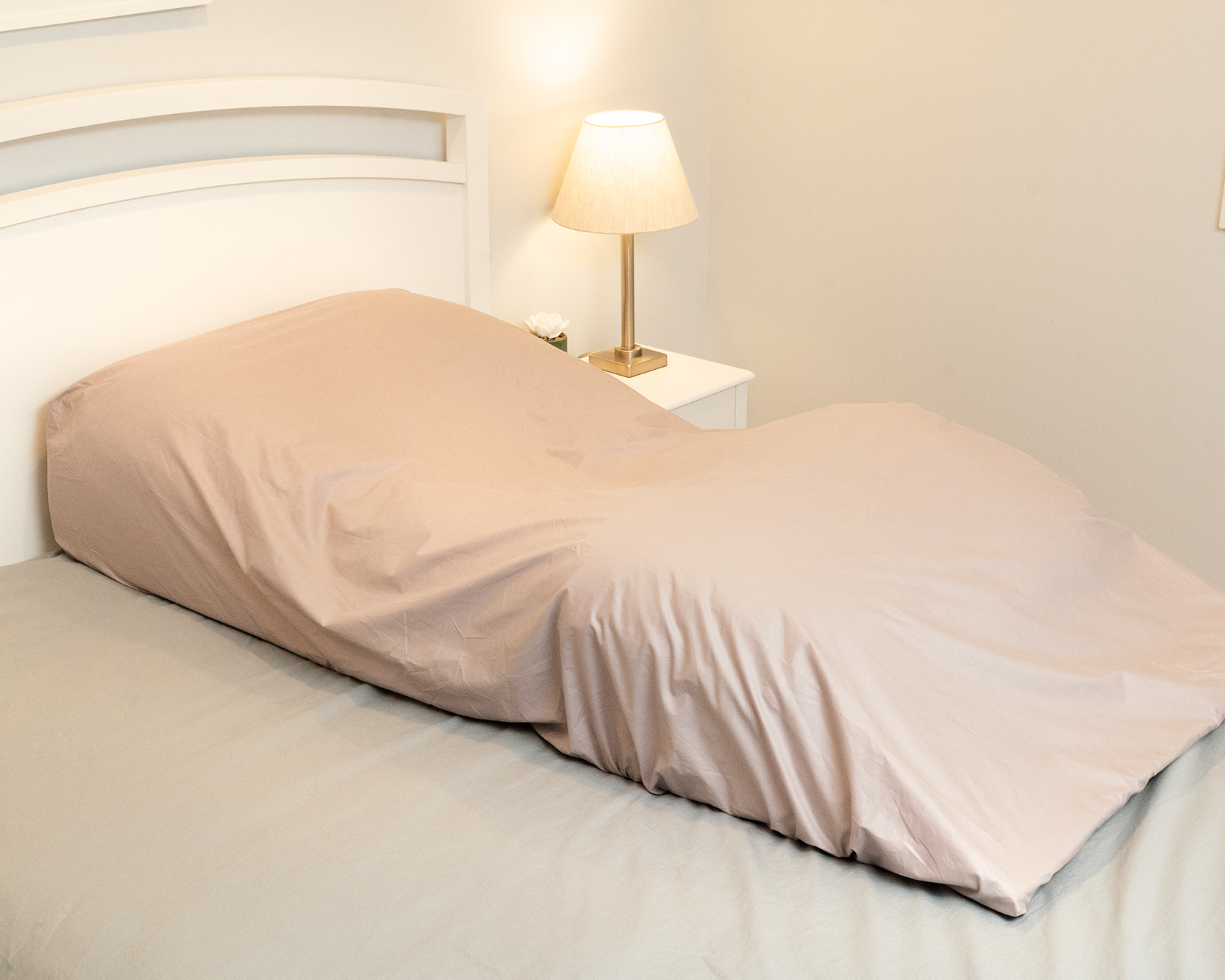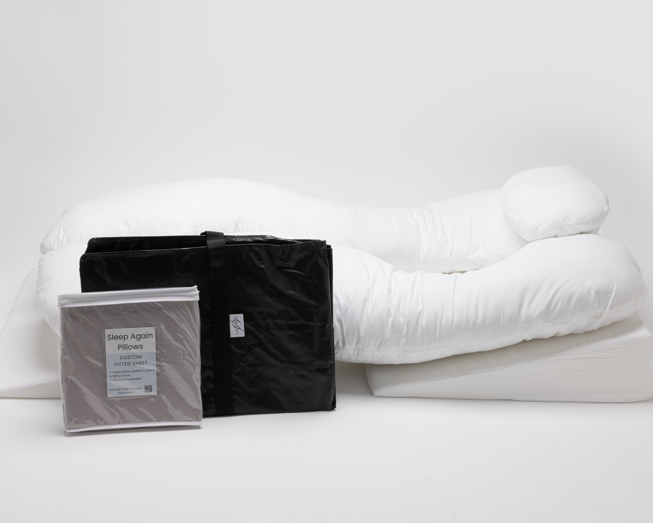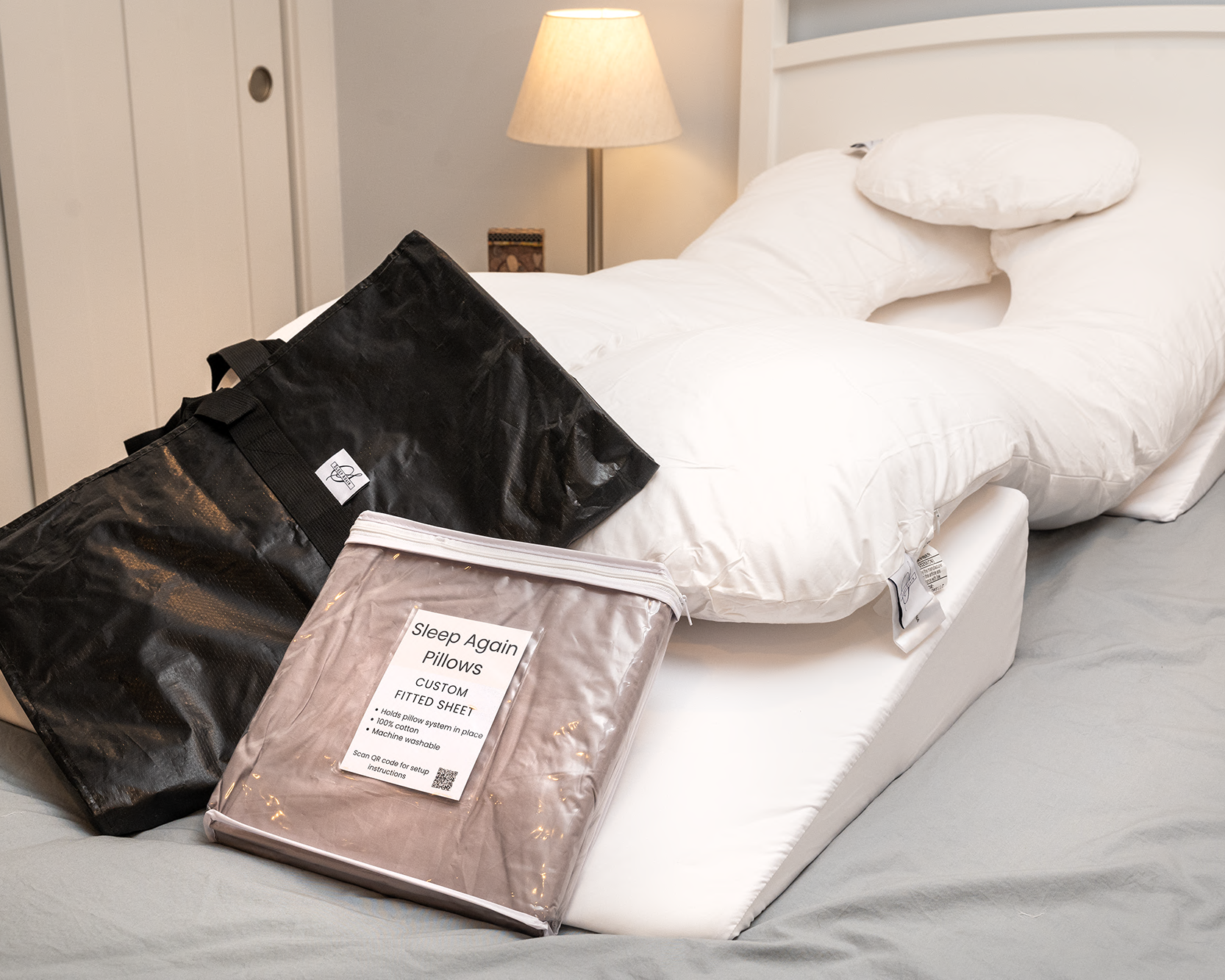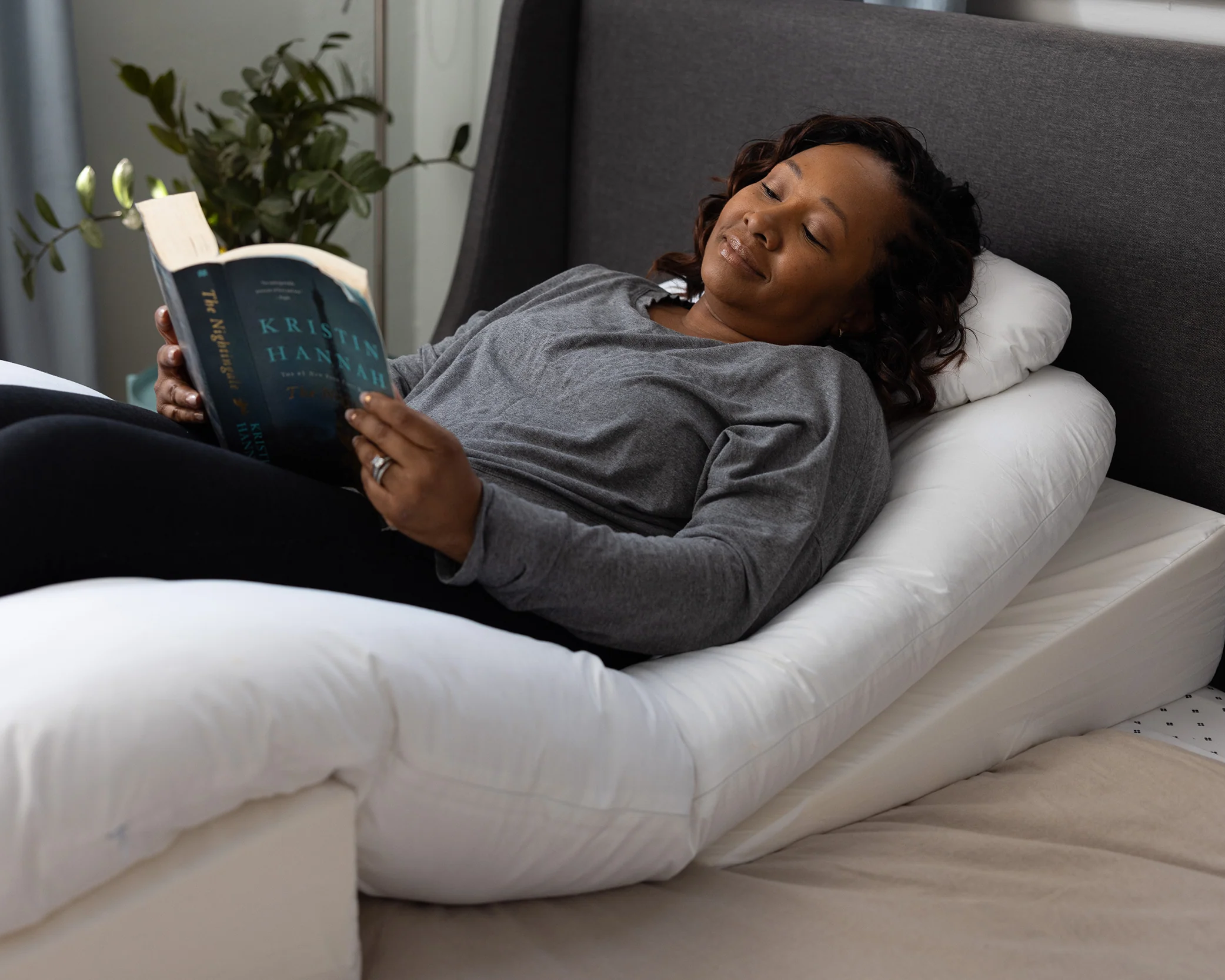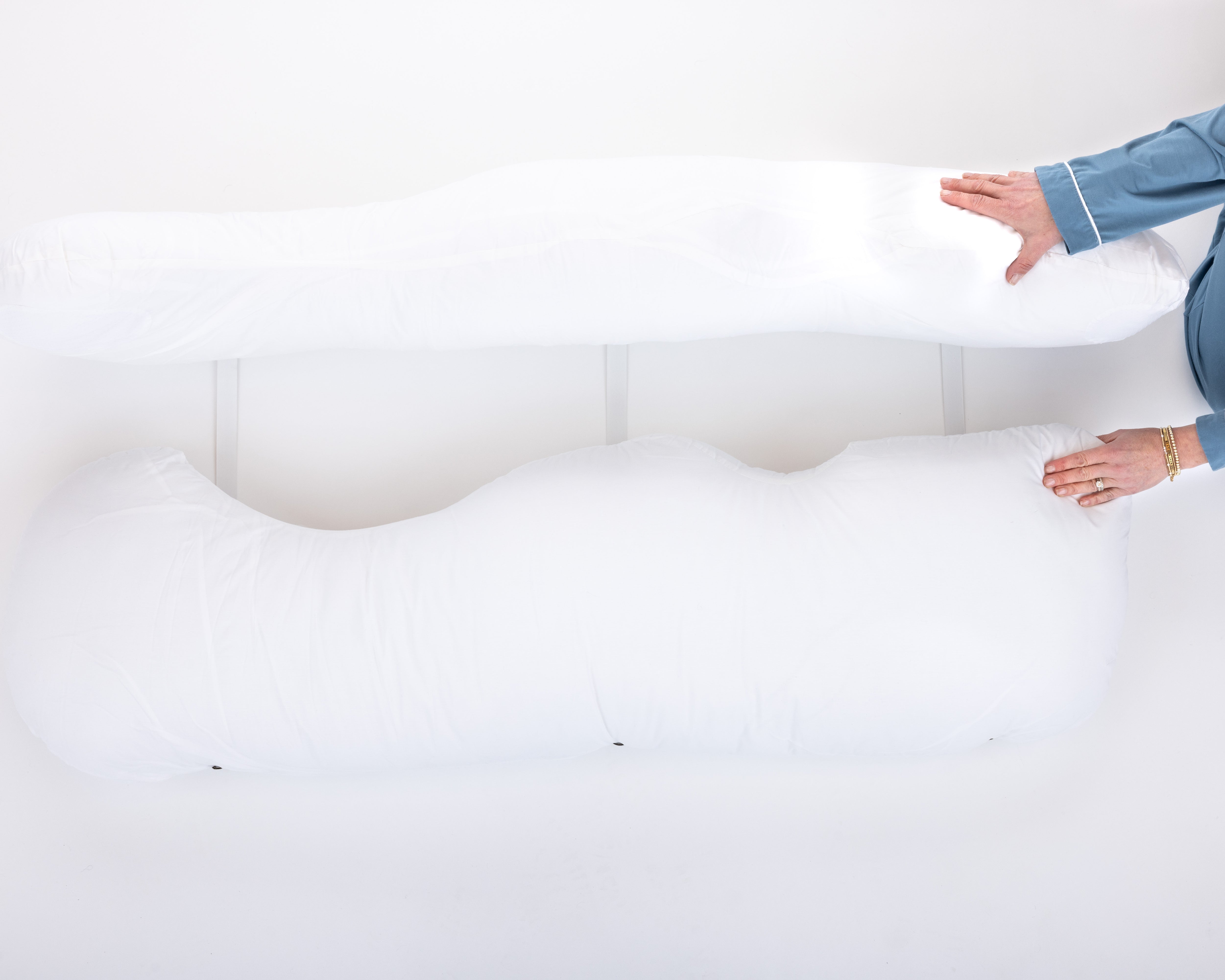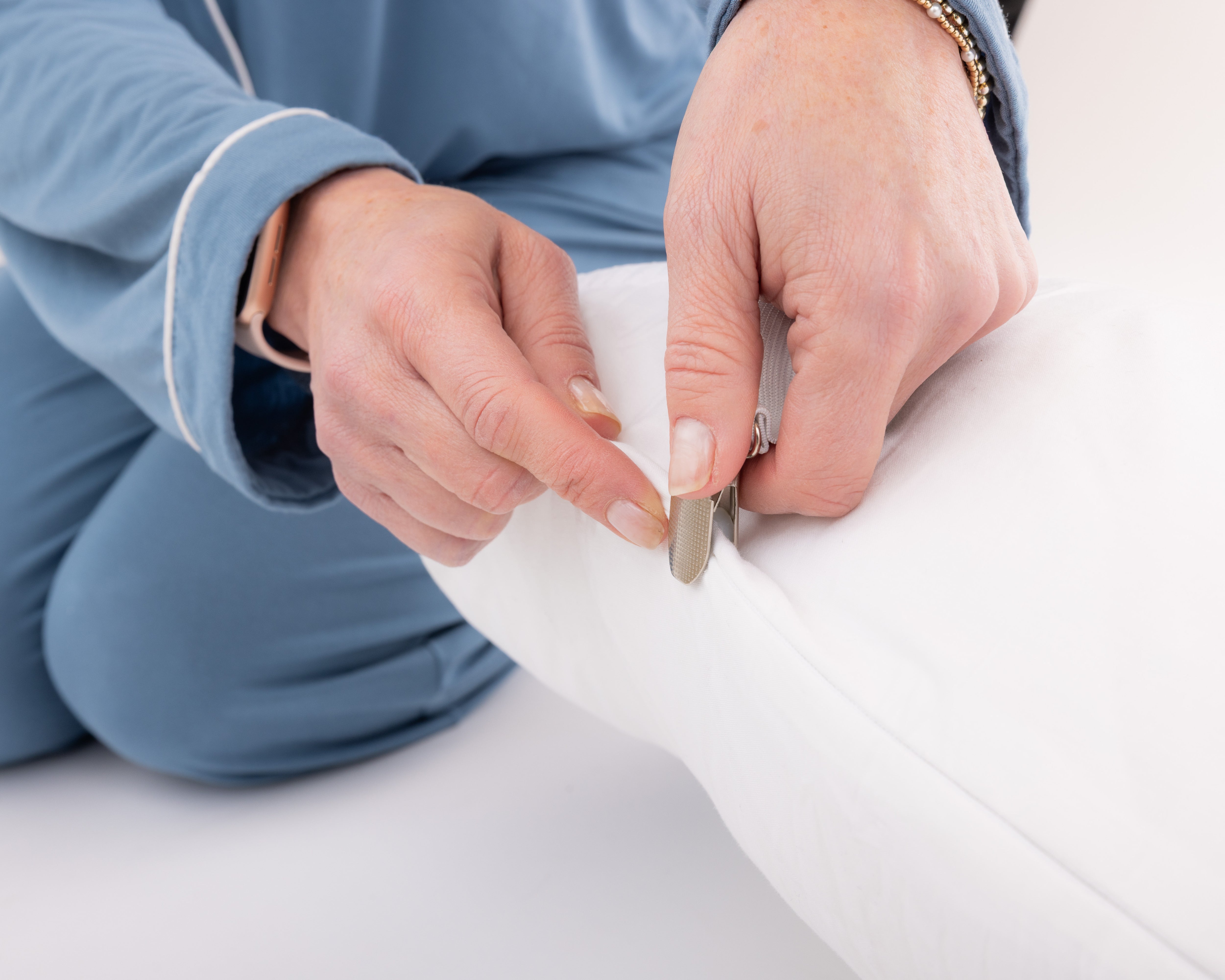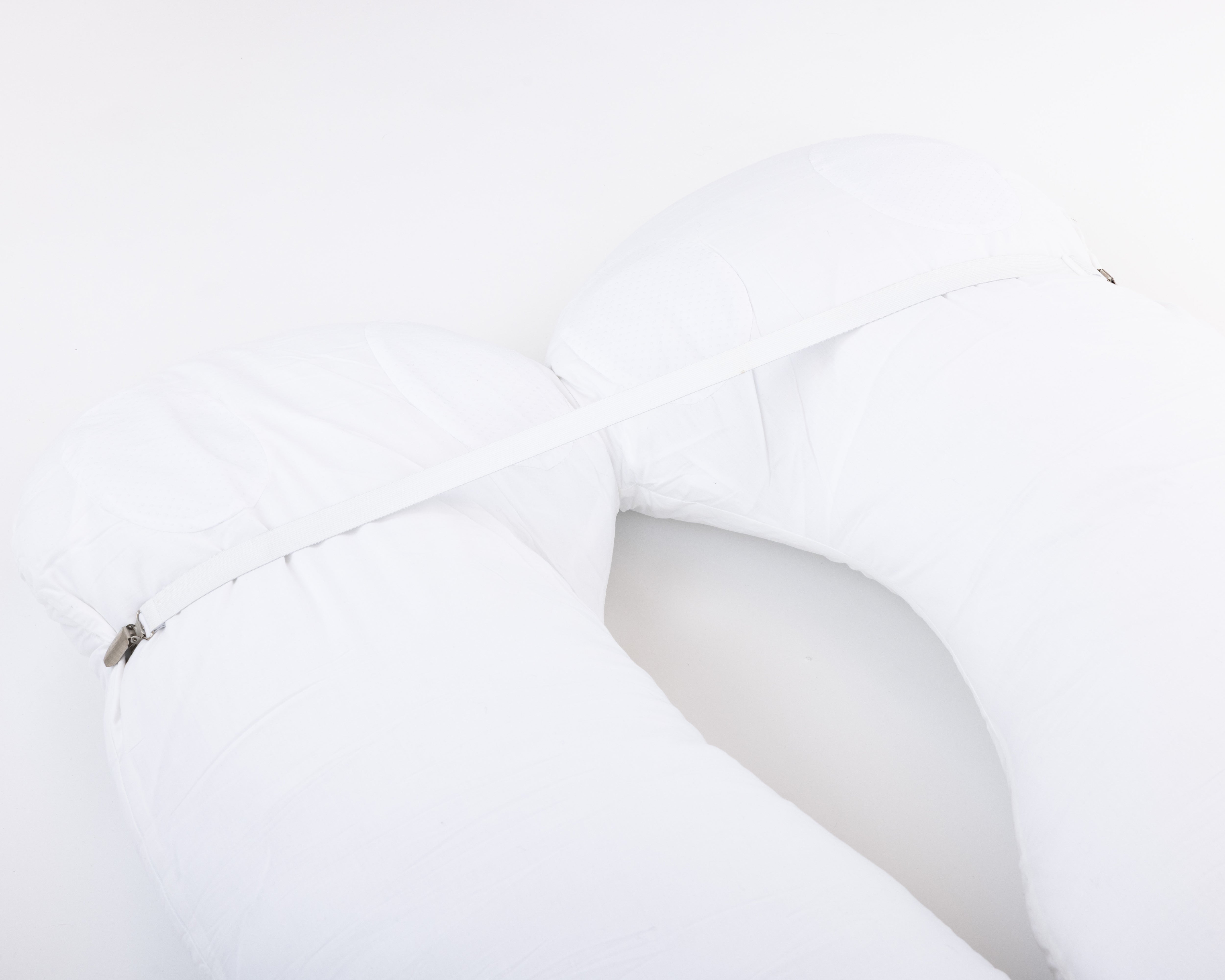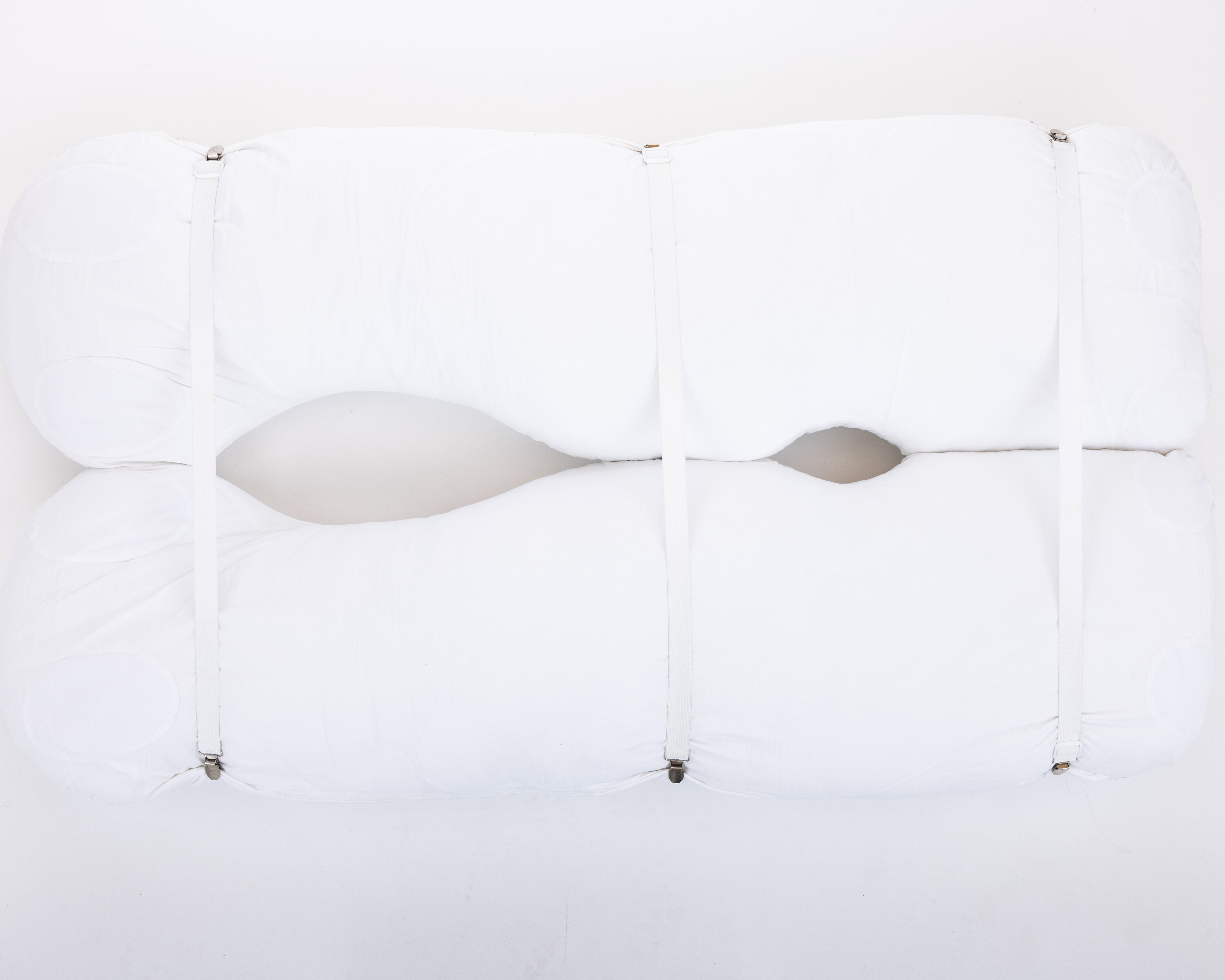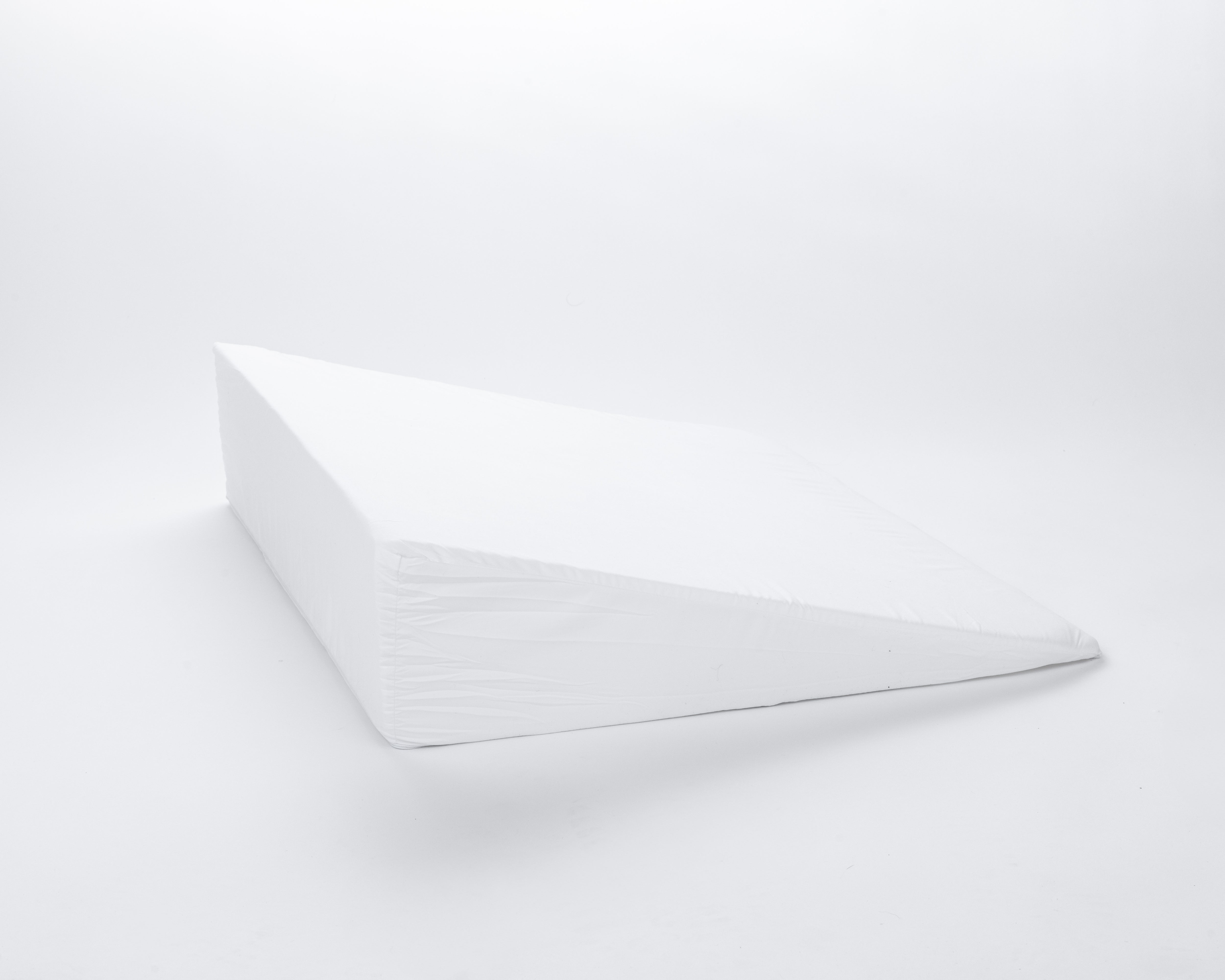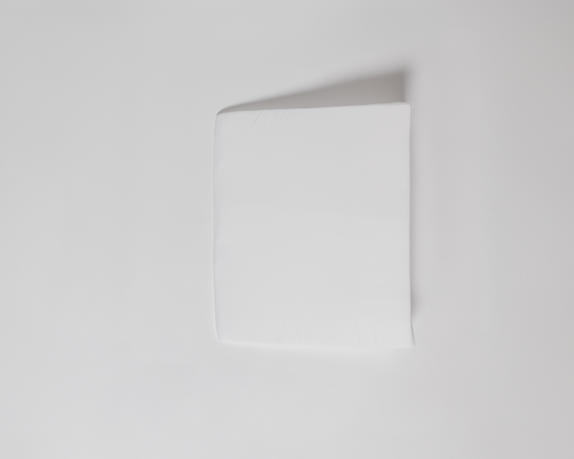Buying the wrong wedge pillow width is like ordering a small pizza for a family of six—technically it's pizza, but nobody's going to be happy. You might think a wedge is just a wedge, but the difference between a 24-inch standard and a 30-inch extra wide can literally make or break your recovery sleep.
If you're currently playing nightly Tetris with your arms, trying to fit them onto a wedge that's clearly too narrow, you've come to the right place. Those dangling limbs aren't just uncomfortable—they're actively sabotaging your healing.
The Great 24-Inch Wedge Conspiracy
Standard wedge pillows look perfectly reasonable in online photos. At 24 inches wide, they seem spacious enough for any normal human being. But here's the secret manufacturers don't want you to know: your sleeping body has zero respect for theoretical measurements.
Your Arms Have Big Dreams (and Bigger Space Requirements)
When you sleep on your back—which, let's face it, is probably not your natural position but definitely your doctor's orders—your body doesn't stay frozen like a robot. Your shoulders relax, your arms drift outward, and suddenly you need way more real estate than you thought.
The brutal math:
-
Your shoulder width: 14-16 inches (sounds reasonable)
-
Your arms when they get comfortable: add 4-6 inches per side
-
Reality check: You need 22-28 inches minimum
-
Standard wedge offering: 24 inches (oops)
It's like trying to fit a king-size attitude into a twin-size space. Spoiler alert: it doesn't work.
When Narrow Wedges Become Recovery Saboteurs
For anyone healing from surgery, hanging arms create a cascade of problems:
-
Increased pain from unsupported positioning
-
Frequent sleep disruption from discomfort
-
Arms that go numb from poor circulation
-
Unstable positioning that shifts throughout the night
Surgery-specific problems:
-
Shoulder surgery: Unsupported operated arm can worsen healing
-
Lung surgery: Poor arm positioning interferes with breathing mechanics
-
Heart surgery: Hanging arms can strain chest incisions
-
Abdominal surgery: Compensation movements stress core muscles

Extra Wide Wedges: The 30-Inch Solution to Your Space Problems
Extra wide wedge pillows don't just add 6 inches—they add sanity, comfort, and the revolutionary concept of actually fitting your body.
The Real Space You Actually Need
Honest measurements for people who like to breathe:
-
Person with 16-inch shoulders: needs 26-28 inches total
-
Person with 18-inch shoulders: needs 28-30 inches total
-
Couples sharing space: need 60+ inches total
A 30-inch wedge gives your body the space it actually requires, not just the theoretical minimum that looks good on a spec sheet.
Why Extra Width Isn't Just Nice—It's Necessary
Complete upper body support: Everything stays where it should, preventing the compensatory gymnastics that turn recovery into an endurance sport.
Room for life's necessities: CPAP hoses, oxygen tubing, and all the medical equipment that suddenly becomes part of your sleep setup get space without turning your bed into an obstacle course.
Partner peace negotiations: Extra width means your partner doesn't get elbowed in the ribs when you try to get comfortable—a win for everyone's recovery.
Positioning flexibility: You can actually adjust without falling off the edge, revolutionary concept though it may be.
SHOP THE EXTRA WIDE WEDGE PILLOW
How to Measure Your Space Like a Pro (Not Like Someone Guessing at Costco)
Step 1: Get Real About Your Shoulder Span
Measure your actual shoulder width while lying flat—not the medical measurement that pretends your arms don't exist. This is your starting point for reality-based decisions.
Step 2: Add Room for Human Nature
Tack on 6-8 inches for natural arm positioning because nobody sleeps like a mummy. If you're someone who gestures while unconscious, add 8-10 inches and embrace your space needs.
Step 3: Factor in Your Recovery Reality
Post-surgical positioning often requires more rigid placement than your pre-surgery sleep habits. Surgery involving anything above your waist means adding 2-4 inches for support space that actually works.
Step 4: Plan for Sleep Movement
Even during recovery, you're going to shift positions unless you're actually a statue. A wedge that barely fits when perfectly positioned will fail spectacularly at 3 AM.

The Great Size Showdown: Which Team Are You On?
Standard 24-Inch Wedge: Best For
Body types:
-
Under 5'4" with narrow build
-
Under 140 pounds
-
Petite frame with naturally narrow shoulders
Living situations:
-
Single sleeper in small spaces
-
Limited bedroom space
-
Short-term recovery (under 3 weeks)
-
Budget-conscious purchases
Recovery scenarios:
-
Minor procedures with minimal positioning needs
-
Back surgery where arm support is less critical
-
Short recovery periods
Extra Wide 30-Inch Wedge: Best For
Body types:
-
5'4" or taller
-
Broad shoulders or muscular build
-
Over 160 pounds
-
Anyone who needs arm space during sleep
Recovery situations:
-
Shoulder, lung, or heart surgery
-
Extended recovery periods
-
Sleep apnea or breathing-related needs
-
Couples sharing bed space
Long-term use:
-
GERD management
-
Sleep apnea treatment
-
Chronic conditions requiring elevation
-
Prioritizing comfort over space constraints
Wedge Construction 101: What Actually Matters
Support Zones That Make Sense
Quality wedges aren't just foam triangles—they're engineered for real bodies:
-
Base zone: Rock solid for structural integrity (because nobody wants a wobbly foundation)
-
Torso zone: Firm enough to maintain elevation, soft enough to not feel punitive
-
Shoulder zone: Pressure relief that doesn't sacrifice support (the holy grail of wedge design)
Cover Features Worth Caring About
Look for covers that won't make you hate your life:
-
Removable and washable (essential when you're spending quality time in bed)
-
Breathable enough that you don't wake up in a sweat lodge
-
Non-slip because sliding down defeats the entire purpose
-
Hypoallergenic for skin that's already dealing with enough
Common Sizing Mistakes That Will Haunt Your Recovery
The "One Size Fits All" Delusion
Body dimensions vary more than shoe sizes, yet people shop for wedges like they're buying socks. What works for your petite friend might leave you hanging off the edges like a Renaissance painting of suffering.
The False Economy of Cheap Wedges
Saving $40 on a wedge pillow when you need weeks of quality sleep is like buying discount parachutes—the savings aren't worth the consequences.
The Partner Consideration Issue
If you share a bed, your comfort choices affect your partner's sleep quality. A cramped, grumpy partner makes for a miserable recovery experience for everyone.
The Bed-Size-First Approach
Your body dimensions matter infinitely more than creating perfect symmetry on your mattress. Better to have proper support that extends beyond your "side" than perfect geometry with inadequate comfort.
The Short-Term Thinking Problem
Many recoveries last longer than expected, and some conditions become permanent companions. Choosing based only on immediate needs often means buying twice.
Professional Recommendations by Surgery Type (The Real Talk Version)
Shoulder and Rotator Cuff Surgery
Verdict: Extra wide or prepare for regret Reality: Your operated arm needs complete support, not a balancing act on the edge of inadequate pillows.
Lung and Heart Surgery
Verdict: Extra wide plus additional support (no compromises) Reality: Breathing mechanics and circulation don't negotiate with undersized pillows.
Hip and Knee Surgery
Verdict: Either size works, choose based on comfort preferences Reality: Your arms aren't the star of this show, so focus on overall comfort.
Abdominal Surgery (including C-section)
Verdict: Extra wide for extended recovery, standard acceptable for short-term Reality: Arm support becomes critical when your core muscles are on strike.
Spinal Surgery
Verdict: Extra wide with complete system (your spine deserves the best) Reality: Spinal alignment requires comprehensive support, not creative pillow stacking.

Beyond Solo Wedges: Why Complete Systems Win
Why Single Wedges Are Like Buying One Shoe
A lone wedge pillow addresses upper body elevation while ignoring everything else your recovering body needs. It's partial problem-solving at best.
The gaps that create problems:
-
No side support to prevent rolling
-
Missing leg elevation for spinal alignment
-
Inadequate neck support at elevated angles
-
Pillow gaps that create pressure points
The Complete System Advantage
Professional-grade systems, such as the Sleep Again Pillow System, include:
-
Extra wide upper body wedge for optimal torso support
-
Contoured side pillows for stable positioning
-
Leg support wedge for proper spinal alignment
-
Specialized head pillow for neck comfort
-
Washable covers for hygiene during recovery
For those ready to stop playing pillow Jenga, the Sleep Again Pillow System provides all these components in an integrated design that actually works together.
This approach eliminates the guesswork of trying to make random pillows play nice together. Each piece is designed to work with the others, creating positioning that actually stays put through the night.
Red Flags Your Wedge Isn't Working
Physical warning signs:
-
Arms or shoulders performing disappearing acts off the edges
-
Neck, shoulder, or back pain that wasn't invited to the party
-
Numbness or tingling that suggests circulation issues
-
Sliding down like you're on a playground slide
Sleep quality disasters:
-
Nightly repositioning that rivals musical chairs
-
Waking up more exhausted than when you went to bed
-
Partner complaints about space wars
-
Inability to maintain elevation that your doctor actually prescribed
Frequently Asked Questions (The Real Questions People Ask)
Q: Can I just use regular pillows to make a standard wedge wider?
A: Sure, if you enjoy midnight pillow-fluffing sessions and gaps that create pressure points. Regular pillows have the structural integrity of wet tissue paper.
Q: Will an extra wide wedge fit in my queen bed with my partner?
A: A 30-inch wedge leaves 30 inches for your partner on a 60-inch queen bed. Most people find this more comfortable than playing sardines on a narrow wedge.
Q: How much more do extra wide wedges cost?
A: Usually $40-80 more, which breaks down to about $2-3 per night over a typical recovery. That's less than your coffee habit.
Q: Do I need the extra width if I'm recovering from lower body surgery?
A: Your upper body still needs support, and comfort affects your entire recovery experience. Don't shortchange yourself.
Q: How do I know if I need a complete system vs. just a wedge?
A: If your recovery is longer than a month, involves major surgery, or you want to sleep comfortably rather than just survive, consider the complete system.
Q: What angle should my wedge pillow be for recovery?
A: Most surgeons recommend 30-45 degrees. Start higher after surgery and gradually decrease as healing progresses and you remember what comfort feels like.
Q: Can I sleep on my side with a wedge pillow?
A: Yes, but only on your non-operated side with proper support. Your operated side needs to avoid playing the role of mattress.
Q: How do I clean my wedge pillow after surgery?
A: Look for removable, washable covers because recovery involves more time in bed and sometimes more laundry than you'd prefer.
Q: Will insurance cover a wedge pillow for recovery?
A: Sometimes, when prescribed by a physician. Check with your insurance and ask your doctor about a prescription if medically necessary.
Q: How firm should a wedge pillow be?
A: Firm enough to maintain elevation all night but not so hard it feels like sleeping on concrete. Medium-firm to firm works for most post-surgical needs.
Q: Can I use a wedge pillow on a soft mattress?
A: Soft mattresses can sabotage wedge positioning by creating sinkholes. Consider a firm board under the wedge or temporarily upgrade to a firmer mattress.
Q: What's the difference between a wedge pillow and stacking regular pillows?
A: Wedge pillows maintain consistent angles while regular pillows compress and shift like they're trying to escape. It's the difference between engineering and wishful thinking.
Q: How do I keep my wedge pillow from sliding down during the night?
A: Look for non-slip bases or add a yoga mat underneath. Sliding wedges are about as useful as screen doors on submarines.
Making Your Final Decision (Without Overthinking It)
Quick Decision Framework
Choose Standard 24-Inch If:
-
You're under 5'4" with a petite build
-
Sleeping alone in a small bedroom
-
Recovery timeline is under 3 weeks
-
Budget is the primary concern
Choose Extra Wide 30-Inch If:
-
You're 5'4" or taller
-
Surgery involves shoulder, chest, or lung areas
-
Recovery timeline extends beyond 3 weeks
-
Comfort is a priority over cost savings
Consider Complete System If:
-
You're recovering from major surgery
-
You need multiple positioning options
-
Comfort and recovery speed are priorities
-
You want a comprehensive positioning solution
The Bottom Line: Size Really Does Matter
The difference between a 24-inch and 30-inch wedge pillow might seem trivial until you're lying awake at 2 AM with your arms hanging off the sides like a scarecrow having an existential crisis.
Most people drastically underestimate their space needs during sleep, especially when recovery positioning requirements enter the picture. The modest additional cost of an extra wide wedge typically pays for itself in the first week of actually comfortable sleep.
When in doubt, go wider. You can always use less space, but you can't magically create support where none exists. Your recovery is too important to play pillow roulette.
Medical Disclaimer
This information is provided for educational purposes only and should not replace professional medical advice. Wedge pillow recommendations may vary based on your specific surgical procedure, recovery requirements, and individual circumstances. Always follow your surgeon's specific post-operative instructions regarding sleep positioning and elevation requirements. If you experience increased pain, breathing difficulties, or other concerning symptoms related to your sleep positioning, contact your healthcare provider immediately. The mention of specific products or brands is for informational purposes only and does not constitute a medical recommendation or endorsement.



